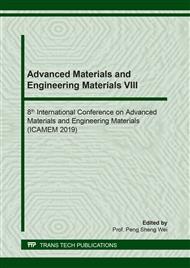p.171
p.176
p.182
p.190
p.196
p.203
p.211
p.217
p.224
Throughput Estimation Model of Cluster Tool in Semiconductor Manufacturing
Abstract:
Semiconductor manufacturing management system was developed and grown up over the past decades. In order to increase the product yield and enhance the production productivity, cluster tools became the main stream in modern wafer fabrication factories which occupies over 50% of production equipment. Generally, cluster tools are integrated by several components including robots, vacuum chambers (Load locks) and single-wafer process chambers in a module and can be treated as a small factory. The throughput estimation before recipe release is very difficult. However, it is necessary and important for the planning activity. In this work, a throughput estimation model for cluster tools is proposed. The Multiple Regression Analysis is applied to develop a set of throughput estimation equations. A simulation model of cluster equipment including 3 single-wafer process chambers are built to get the historical throughput data for the regression analysis. From the Multiple Regression Analysis, it reveals that different numbers of recipes processed in the same time have to develop different regression model. The major factors in the regression model include numbers of load ports and process time of each recipe. Furthermore, a set of recipes are used to test the accuracy of estimation. Based on the testing results, they revealed that the MAPE is under 3% and the estimation model is accepted in practice to forecast the throughput of recipes for the planning activities.
Info:
Periodical:
Pages:
196-202
Citation:
Online since:
July 2019
Authors:
Price:
Сopyright:
© 2019 Trans Tech Publications Ltd. All Rights Reserved
Share:
Citation:


